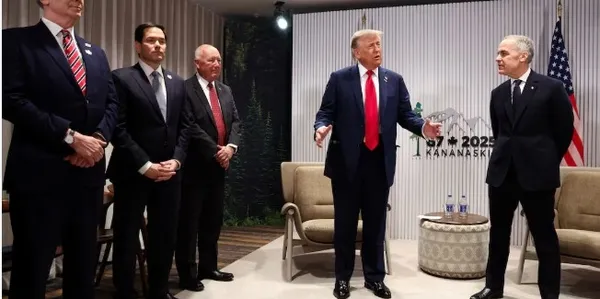G7 Summit convenes in Canada addressing global security issues
By: Dr. Kirkpatrick Williams
World leaders wrapped up the G7 Summit in Alberta, Canada, this week, focusing on global security amid escalating crises in the Middle East and Ukraine, alongside emerging technology and economic challenges. Against the scenic backdrop of the Rockies, leaders from Canada, France, Germany, Italy, Japan, the United Kingdom, the United States, and senior representatives from the EU, NATO, Australia, India, Mexico, South Korea, and Ukraine gathered in Banff and Kananaskis to address some of the world's most pressing issues.
While tensions over Iran-Israel and the war in Ukraine featured prominently, differences among members emerged, particularly as U.S. President Trump departed early, opposing a joint statement on Ukraine, although he did endorse a declaration calling for de-escalation in the Middle East and affirming Israel’s right to self-defense. This split highlighted ongoing divisions within the G7, complicating efforts to uphold a unified diplomatic front.
On the security front, summit host Canada emphasized priorities such as supporting Ukraine, addressing the Iran-Israel conflict, and enhancing maritime security. Leaders also endorsed coordinated action on cybercrime, intelligence sharing, and responses to hybrid threats, while the NATO secretary-general joined discussions in support of collective defense.
Beyond conflict zones, delegates signed six joint statements tackling emerging global security and technological concerns, including critical minerals supply, artificial intelligence, quantum computing, wildfire response, and migrant smuggling. Canada’s finance minister framed this agenda as a bid to reinforce global resilience and foster shared economic growth.
Supporters of the summit noted these agreements demonstrated the G7’s capacity to advance collective action on shared security, economic, and technological challenges. They saw value in the group’s efforts to secure supply chains for critical minerals vital to green energy and digital infrastructure.
However, critics argued that the absence of a unified communiqué and the decision to forego a full statement on Ukraine reflected growing fractures within the alliance, especially regarding the refusal by the United States to commit, raising questions about the G7’s effectiveness in times of crisis.
Economically, the summit’s focus on critical minerals and energy security may influence U.S. energy prices in various ways. Efforts to diversify mineral supply chains could stabilize costs for batteries and renewable energy, potentially alleviating long-term pressure on oil and gas markets. On the other hand, heightened geopolitical risks, especially in energy-producing regions, could introduce volatility in short-term oil prices.
Any further escalation in Ukraine or the Middle East might restrict supply flows, spiking oil prices and fueling inflation. Conversely, progress toward securing supply chains and advancing clean energy could ease reliance on fossil fuels over time, helping to moderate energy prices and soften inflationary trends.
As leaders returned home, analysts will monitor whether this G7 summit’s limited, yet targeted agreements translate into concrete action. With global security threats in flux and energy concerns at the forefront, the real test will be translating summit declarations into meaningful policy that strengthens resilience while managing economic fallout.
